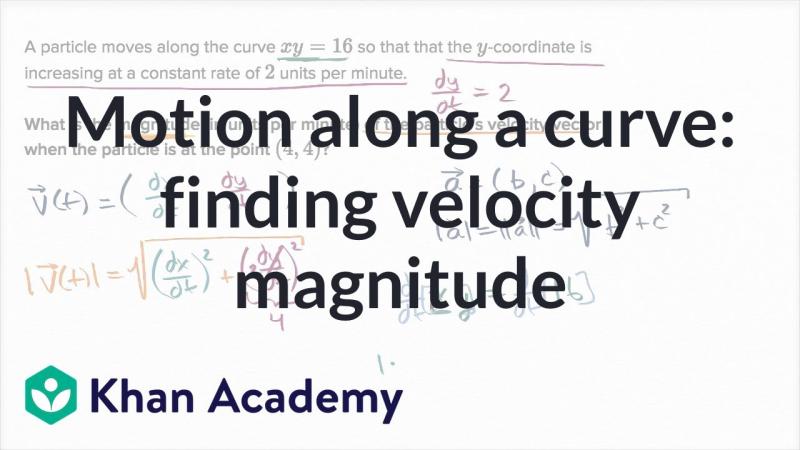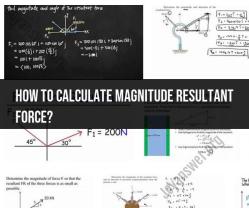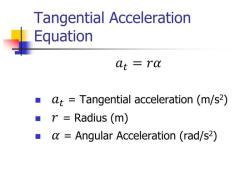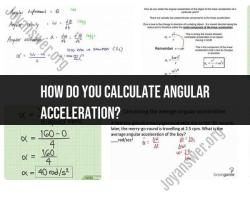How to calculate magnitude of acceleration in physics?
To calculate the magnitude of acceleration in physics, you can use the following step-by-step guide:
Understand the Variables:
- Identify the initial velocity (), final velocity (), and the time interval () over which the acceleration occurs.
Determine the Change in Velocity:
- Calculate the change in velocity () by subtracting the initial velocity from the final velocity.
Calculate Average Acceleration:
- Use the formula for average acceleration:This gives you the average acceleration over the given time interval.
Determine Magnitude:
- The magnitude of acceleration is the absolute value of the average acceleration. In symbols, it is denoted as .
The absolute value ensures that the magnitude is non-negative.
Unit of Acceleration:
- Express the magnitude of acceleration in appropriate units. In the International System of Units (SI), acceleration is measured in meters per second squared ().
Let's summarize the steps with an example:
Example:Suppose an object has an initial velocity , a final velocity , and the acceleration occurs over a time interval of .
Solution:
Calculate the change in velocity:
Calculate average acceleration:
Determine the magnitude of acceleration:
Express the magnitude in units:
So, in this example, the magnitude of acceleration is .
How do you calculate the magnitude of acceleration in physics?
The magnitude of acceleration in physics can be calculated in different ways, depending on the information you have about the motion. Here are three common methods:
1. Using the definition of acceleration:
Acceleration is defined as the rate of change of velocity. Mathematically, it is represented by the following equation:
a = Δv / Δt
where:
ais the accelerationΔvis the change in velocity (final velocity minus initial velocity)Δtis the change in time
To find the magnitude of acceleration, you simply need to take the absolute value of both sides of the equation:
|a| = |Δv / Δt|
This will give you the magnitude of the acceleration in meters per second squared (m/s²).
2. Using Newton's second law of motion:
Newton's second law of motion states that the net force acting on an object is equal to the product of its mass and its acceleration:
F = ma
where:
Fis the net force (in Newtons)mis the mass of the object (in kilograms)ais the acceleration (in meters per second squared)
If you know the net force acting on an object and its mass, you can rearrange the equation to solve for the magnitude of the acceleration:
|a| = |F| / m
3. Using the components of the acceleration vector:
Acceleration is a vector quantity, meaning it has both magnitude and direction. If you know the components of the acceleration vector (ax, ay, and az), you can find the magnitude using the Pythagorean theorem:
|a| = √(ax² + ay² + az²)
This will give you the magnitude of the acceleration vector, regardless of its direction.
Remember that the units of acceleration are always meters per second squared (m/s²).
I hope this explanation helps! Let me know if you have any other questions.
Here are some additional resources that you may find helpful:
- Khan Academy article on acceleration: https://www.khanacademy.org/science/physics/one-dimensional-motion/acceleration-tutorial/v/acceleration
- Physics Classroom article on Newton's laws of motion: https://www.physicsclassroom.com/Physics-Tutorial/Newton-s-Laws
- HyperPhysics article on acceleration: http://hyperphysics.phy-astr.gsu.edu/












